Fall is around the corner, and it’s about time to execute on the planning and preparation I’ve already done to plant our side steps bed.
Compared to last year’s landscaping project, I want to fill more of the space with shrubs, get better multi-season interest, and have more variety of plants.
I used Guide to the Natural Communities of North Georgia, the Native Plants for Georgia series from University of Georgia (UGA) Extension, and the North Carolina (NC) Extension Gardener Toolbox as sources for plant information.
I prioritized plants by appropriateness for my natural community (Piedmont Oak-Pine-Hickory Forest) and adjacent communities (Piedmont Mesic Forest and Piedmont Pine-Oak Woodland), cultural appropriateness from the descriptions from UGA Extension documents and NC State Extension Gardener Toolbox, a subjective aesthetic preference, and then finally what appears to be available from local native plant nurseries.
These are the plants I plan to purchase:
Top steps
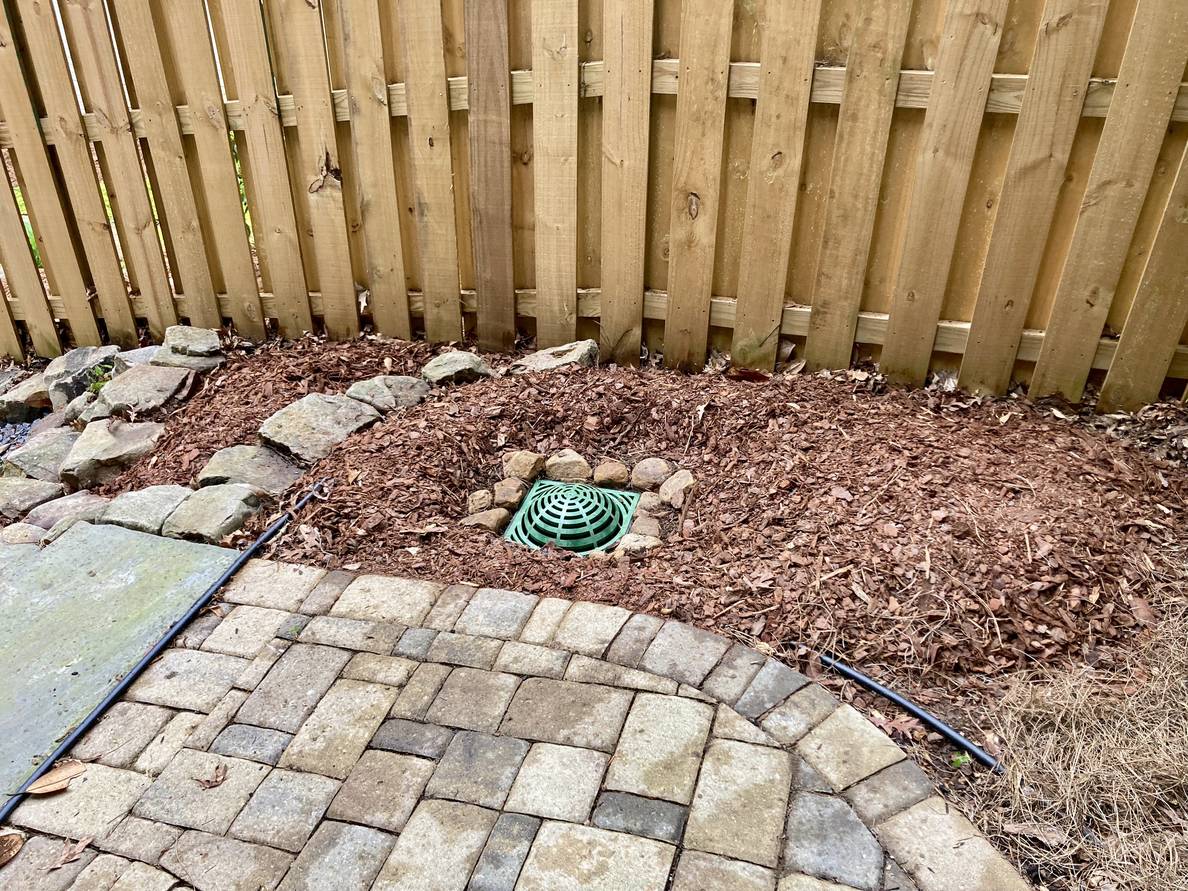
The top of the steps receive partial to full shade throughout the year.
Shrubs
With such a small planting area, I think I have space for two shrubs.
Rhododendron minus (Piedmont Rhododendron)
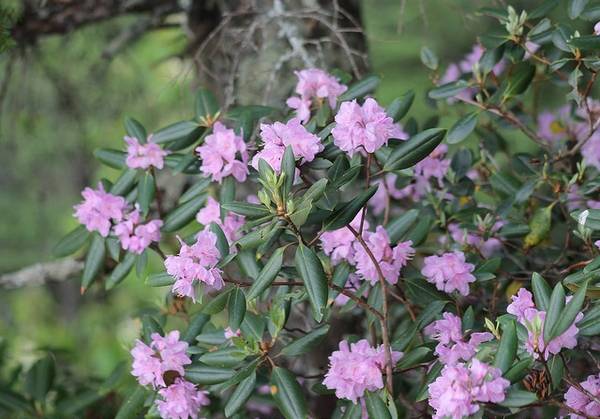
This is a rhododendron species native to our ecoregion according to Natural Communities of North Georgia and should be smaller than the more commonly available rhododendron maximum. I intend to plant this in the larger spot at the very top of the steps.
I have a soft spot for rhododendrons but was concerned that they might be a bit too difficult for me. The North Carolina Extension Gardener Plant Toolbox comments
Piedmont rhododendron grows best in partial shade and cool, moist, well-drained, organically rich, acidic soil. It can tolerate full sun in certain areas, although windy sites should be avoided. It cannot tolerate dense clay, and the roots may rot if the soil does not drain well. Plant the root ball high in the soil to help with drainage issues. Avoid overwatering and over-fertilizing.
and then later
Many Rhododendron cultivars are susceptible to Phytophthora root rot–this leads to leaf loss, reduced vigor, branch dieback, and wilting. Implement good cultural practices first, such as improving drainage with organic matter or berms and avoiding overwatering or overfertilization.
My mom encouraged me to at least give it a try and if it doesn’t work then that’s okay. So I’m giving it a shot.
Unfortunately, only one native plant nursery near me indicates they have it. My backup is Leucothoe fontanesiana (mountain doghobble). Mountain doghobble is also only available at one nearby native nursery. Hopefully between the two of them I’ll find success.
Rhododendron minus on the NC Extension Gardener Plant Toolbox
Leucothoe fontanesiana on the NC Extension Gardener Plant Toolbox
Euonymus americanus (Strawberry Bush)

Strawberry bush should grow a little smaller than the rhododendron. I intend to plant it on the smaller section at the top of the stairs.
I planted one of these in the back path bed as part of last year’s landscaping project. It hasn’t grown much, but did send up a new shoot about two feet long late this summer.
Euonymus americanus on the NC Extension Gardener Plant Toolbox
Herbaceous Perennials, Sedges, and Ferns
Recently I read this article about planting in a sedge grid. I’m not committing to that because a sedge every 12-18 inches with plants in between is a lot of plants and beyond my budget! But I am going to try for an equal mix of flowering perennials and sedges (and ferns) with the goal of more foliar variety with the flowers.
Carex pensylvanica (Pennsylvania Sedge)
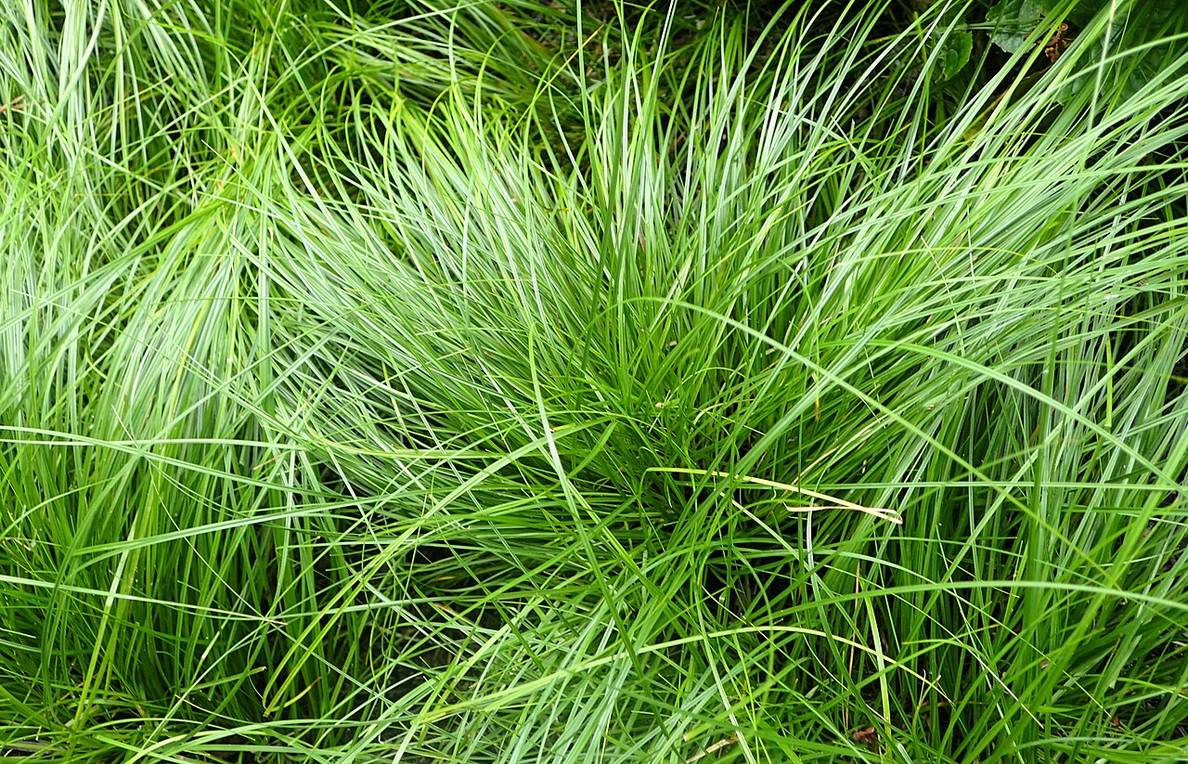
If I were doing the sedge matrix, Pennsylvania sedge and plantainleaf sedge would be my two options. Pennsylvania sedge seems to be a bit more available.
Carex pensylvanica on the NC Extension Gardener Plant Toolbox)
Asplenium platyneuron (Ebony Spleenwort)
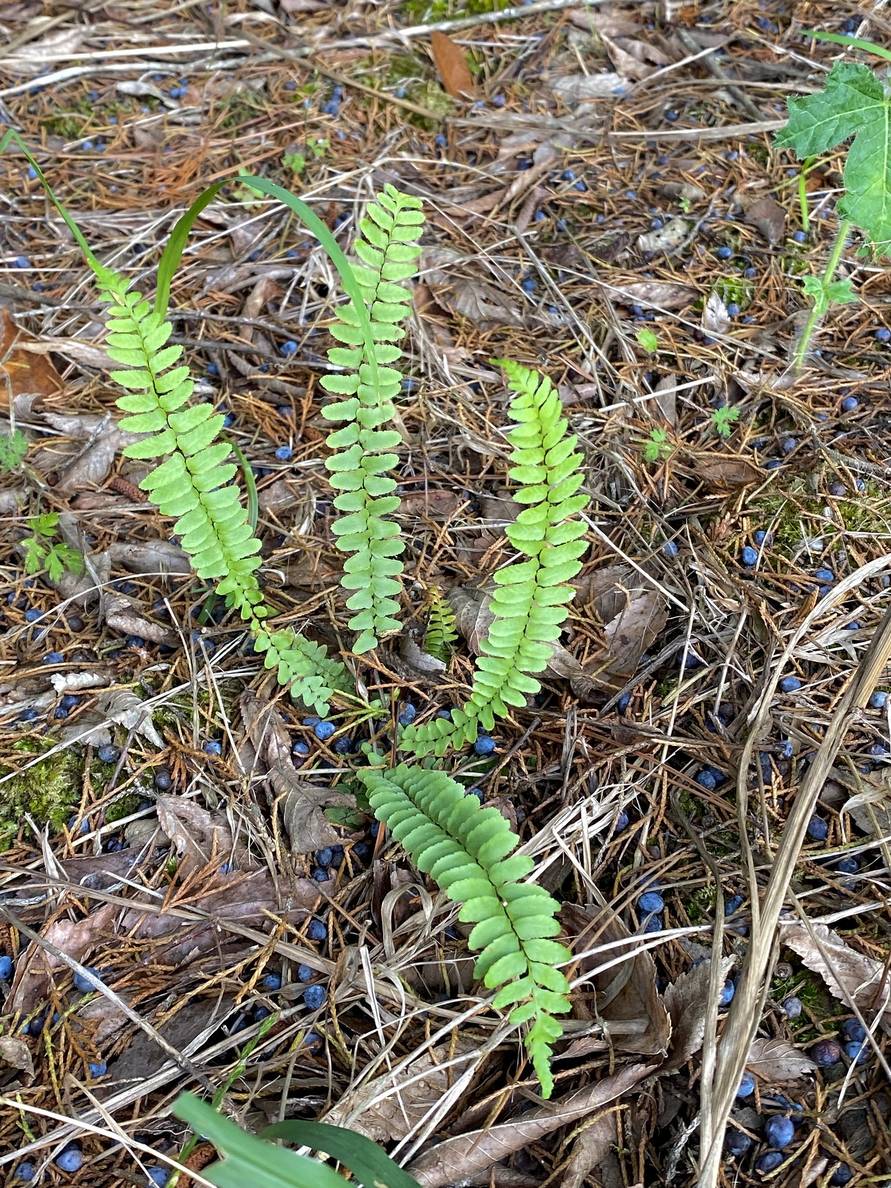
Megan doesn’t like ferns, but ebony spleenwort is just too habitat-appropriate to exclude.
Only one local native plant nursery indicates this as available, so my backup is carex plantaginea (plantainleaf sedge).
Asplenium platyneuron on the NC Extension Gardener Plant Toolbox
Carex plantaginea on the NC Extension Gardener Plant Toolbox
Eurybia divaricata (Woodland Aster)
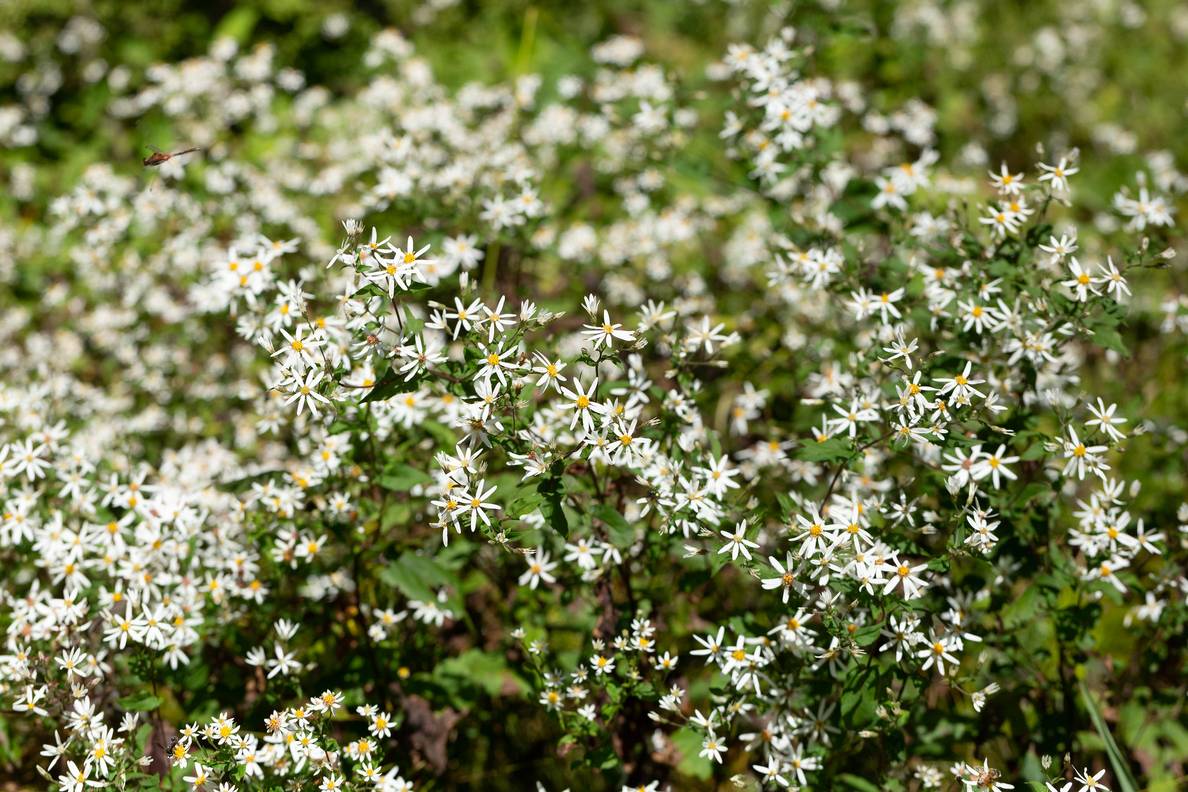
Woodland aster is my late season flower for the top steps.
Eurybia divaricata on the NC Extension Gardener Plant Toolbox
Anemonella thalictroides (Rue Anemone)
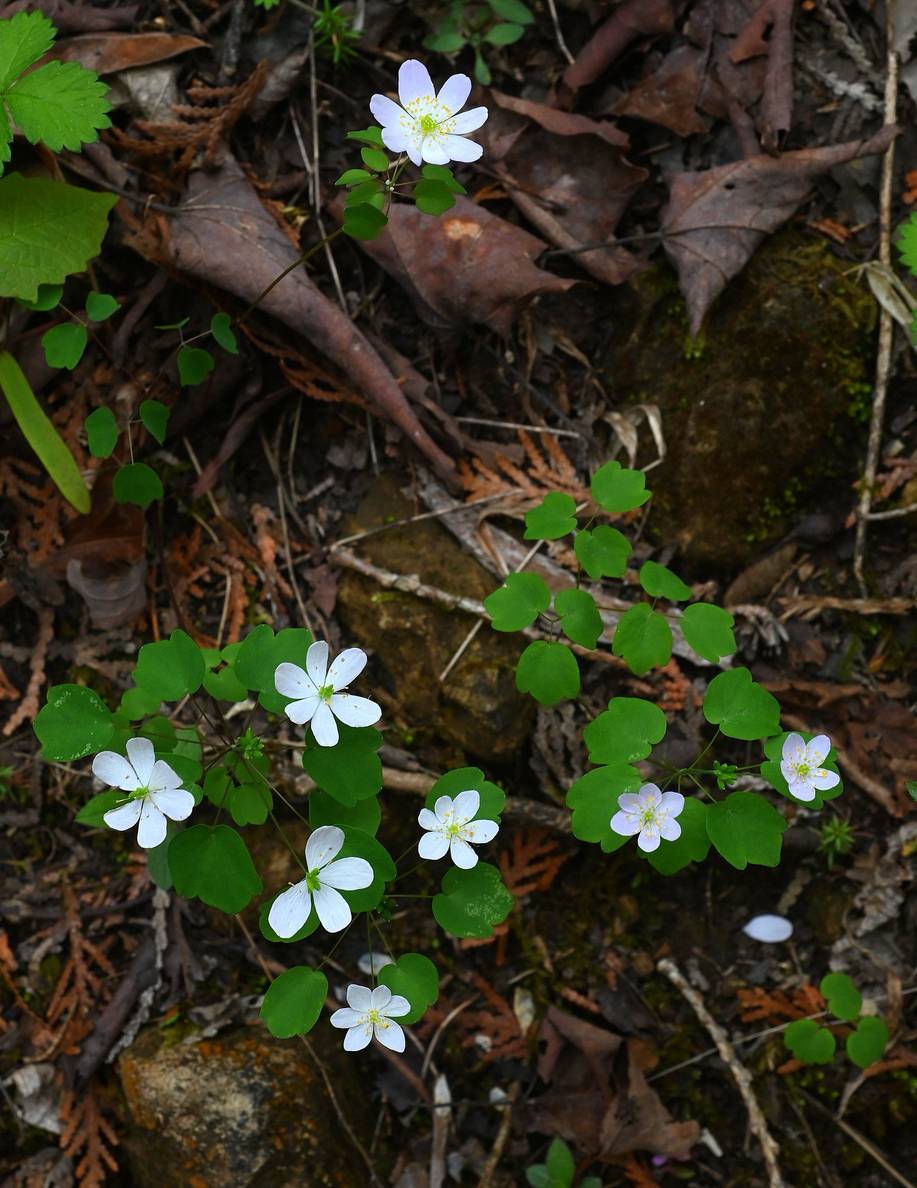
Rue anemone is a smaller wildflower that should give spring and summer blooms. I’ve only seen this listed as available at an upcoming plant sale, so my backup is mitchella repens (partridgeberry), a ground cover I love spotting on hikes.
Anemonella thalictroides on the NC Extension Gardener Plant Toolbox Mitchella repens on the NC Extension Gardener Plant Toolbox
Chrysogonum virginianum (Green-and-Gold)
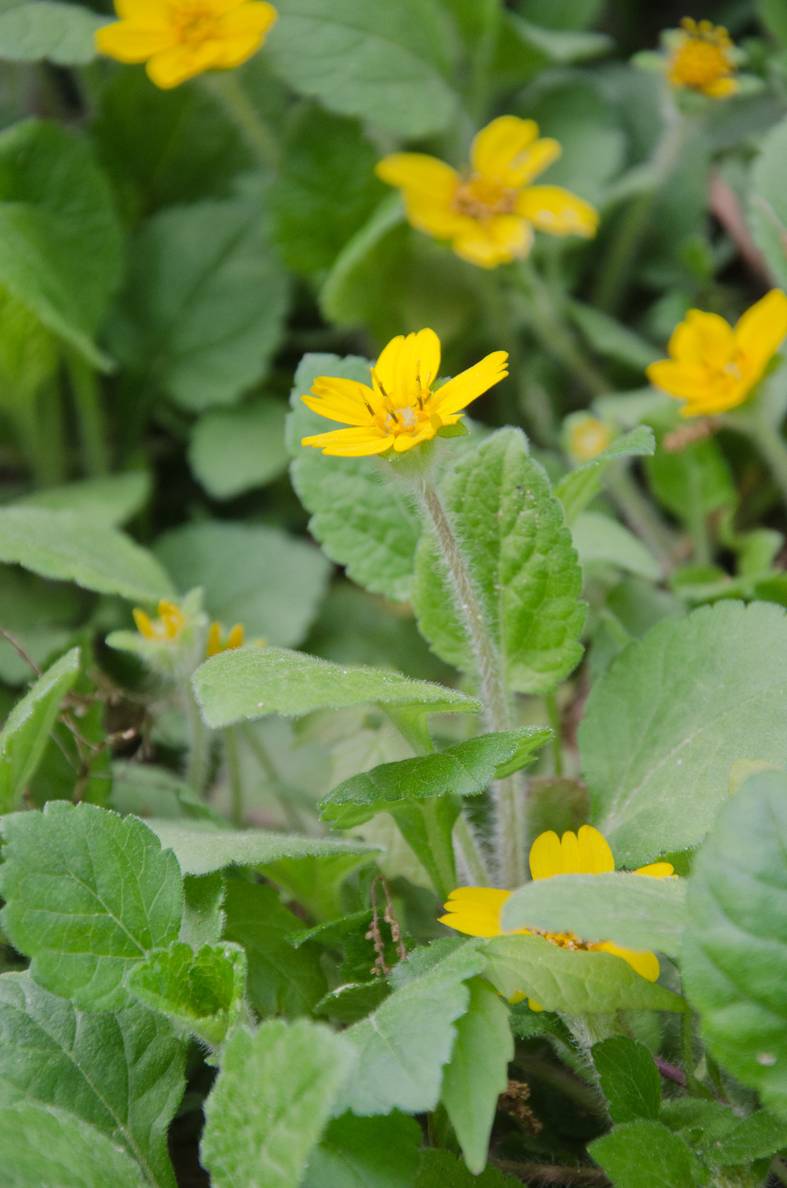
Green-and-gold is a low-growing, spreading perennial that also blooms in spring and summer. I used some of these in last year’s project. It is also very habitat-appropriate, and pretty to boot.
Chrysogonum virginianum on the NC Extension Gardener Plant Toolbox
Tiarella cordifolia (Foamflower)
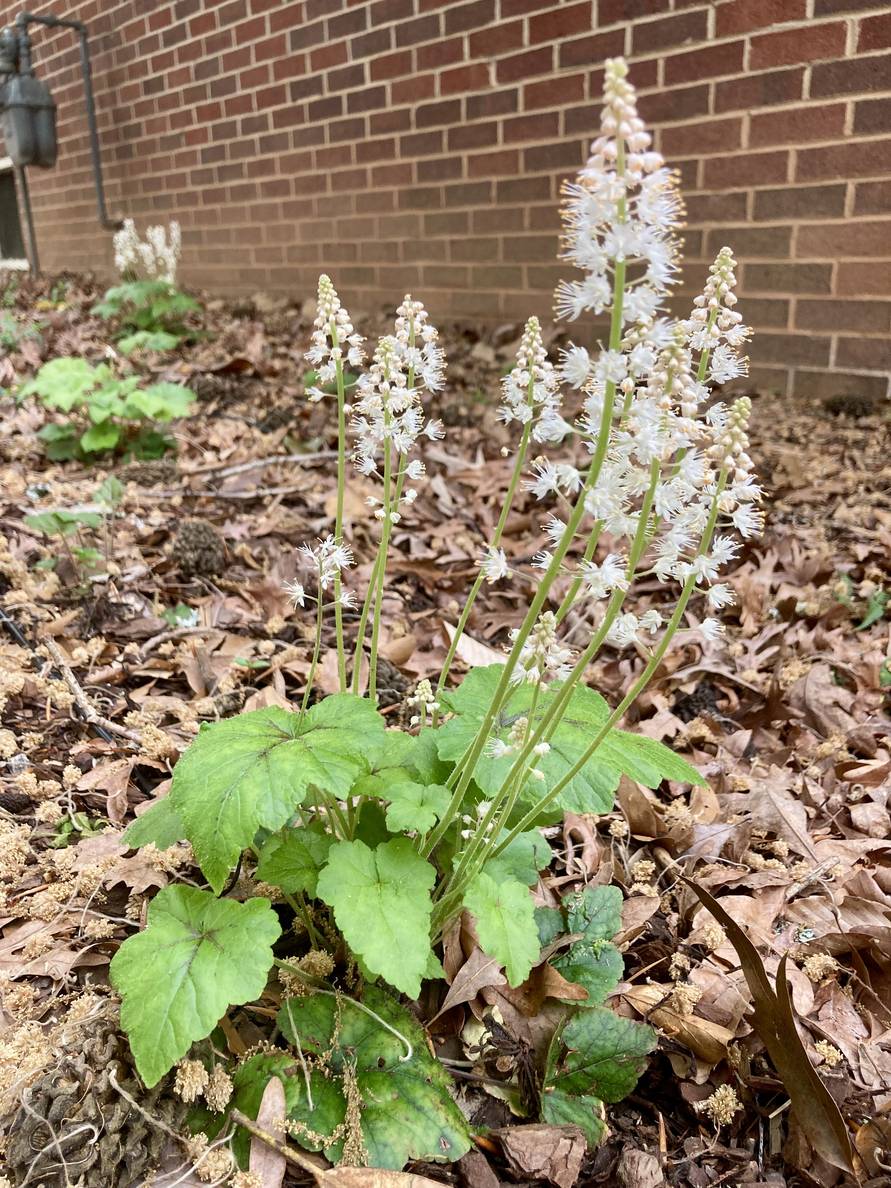
Foamflower is another plant we put in the back path bed and is one of our favorites in that space. In that bed, foamflower blooms lasted a little later than the green-and-gold.
Tiarella cordifolia on the NC Extension Gardener Plant Toolbox
Bottom steps
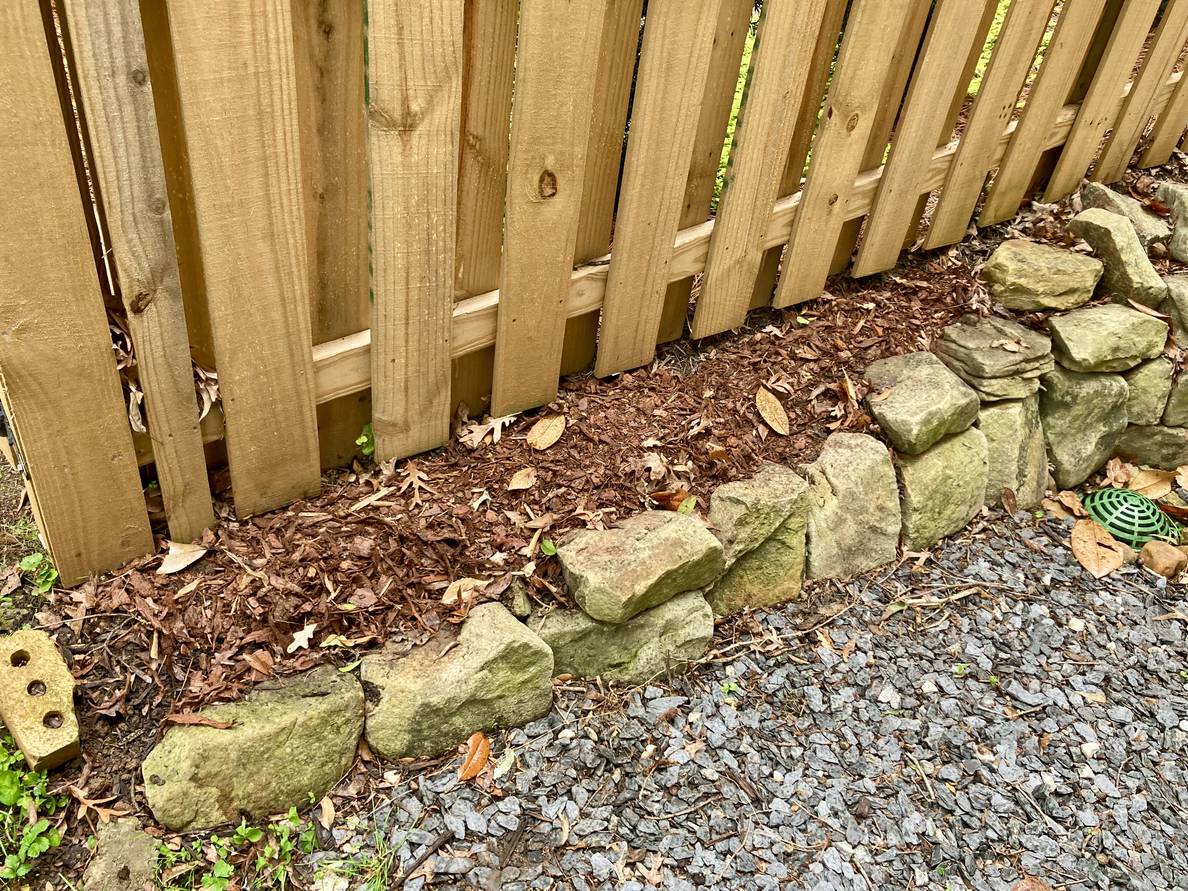
There’s no space for shrubs here. We get weeds growing, so I want to plant something intentional here. I want to do the same mix of sedges and flowering plants.
This space ranges from full sun in the spring when the sun is higher and the sky but the oaks haven’t yet leafed out and full shade in the summer. Fall and winter see full to partial shade. That really narrows the plant selection.
Carex pensylvanica (Pennsylvania Sedge)
I plan to use the same sedge as at the top of the steps. This space gets a bit too much sun for plantainleaf sedge.
Lobelia siphilitica (Great blue lobelia)
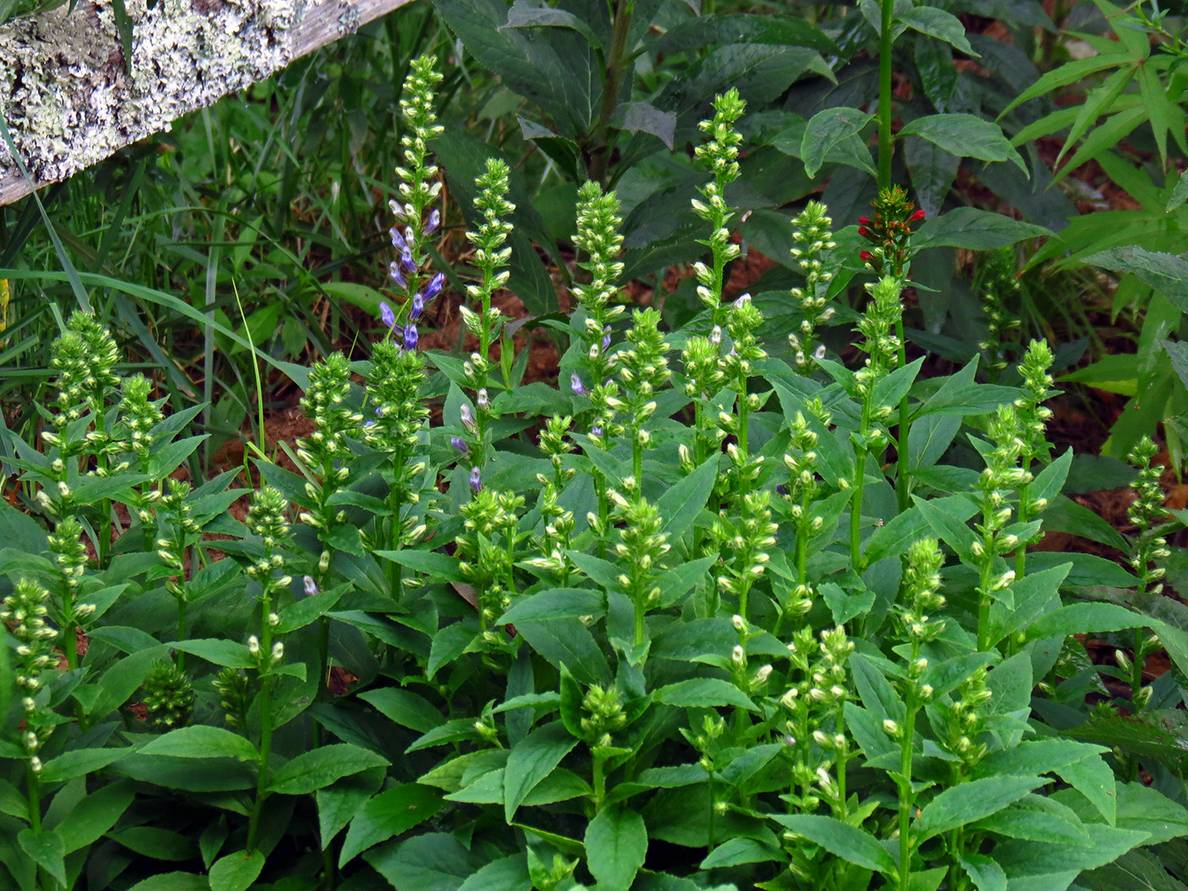
Great blue lobelia is the late season bloomer for the bottom of the steps. It’s not the best habitat fit, but the better habitat option is ageratina altissima (white snakeroot) which is toxic, and we have kids around here.
Lobelia siphilitica on the NC Extension Gardener Plant Toolbox
Tradescantia ohiensis (Smooth Spiderwort)
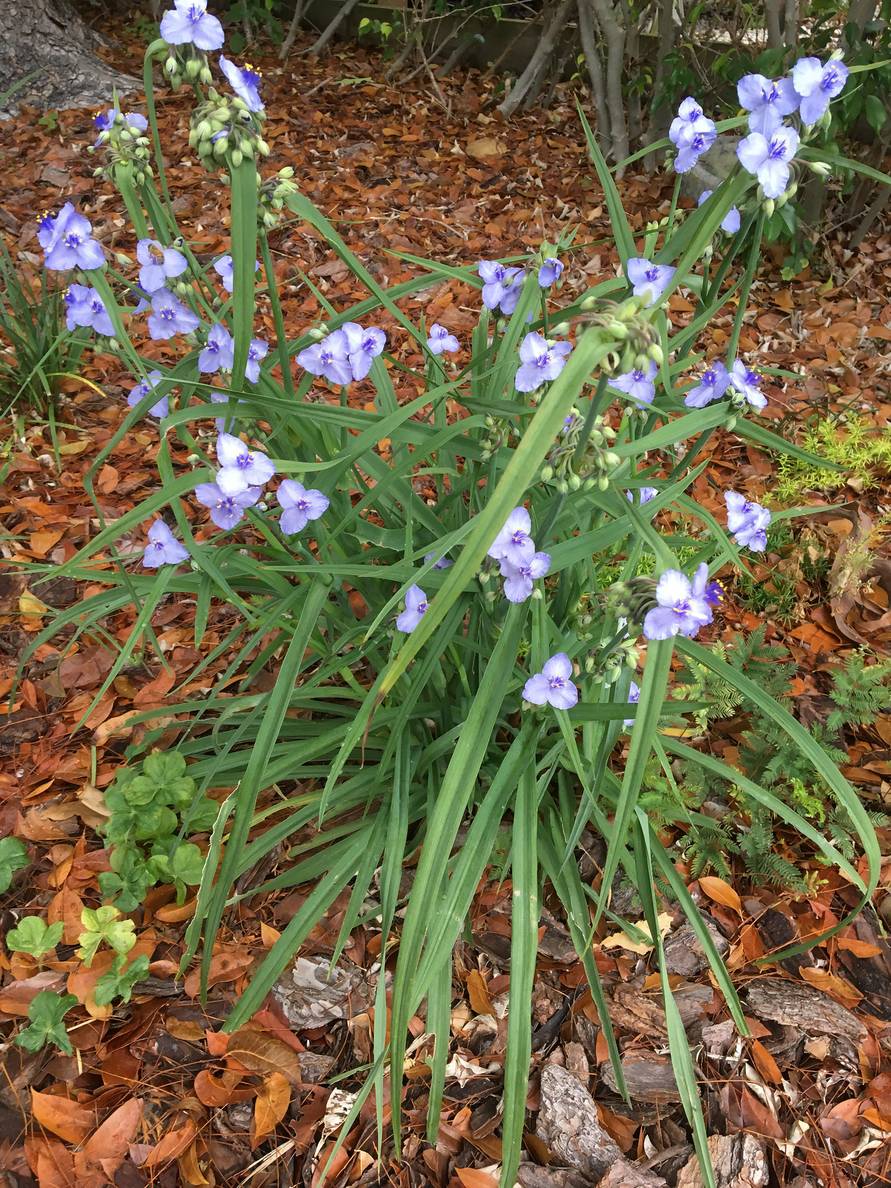
Smooth spiderwort is a spring/summer bloomer that can tolerate full sun to full shade.
Only one nursery indicates this plant as available. My backup is salvia lyrata (lyreleaf sage).
Tradescantia ohiensis on the NC Extension Gardener Plant Toolbox
Salvia lyrata on the NC Extension Gardener Plant Toolbox
Sedum ternatum (Mountain Stonecrop)
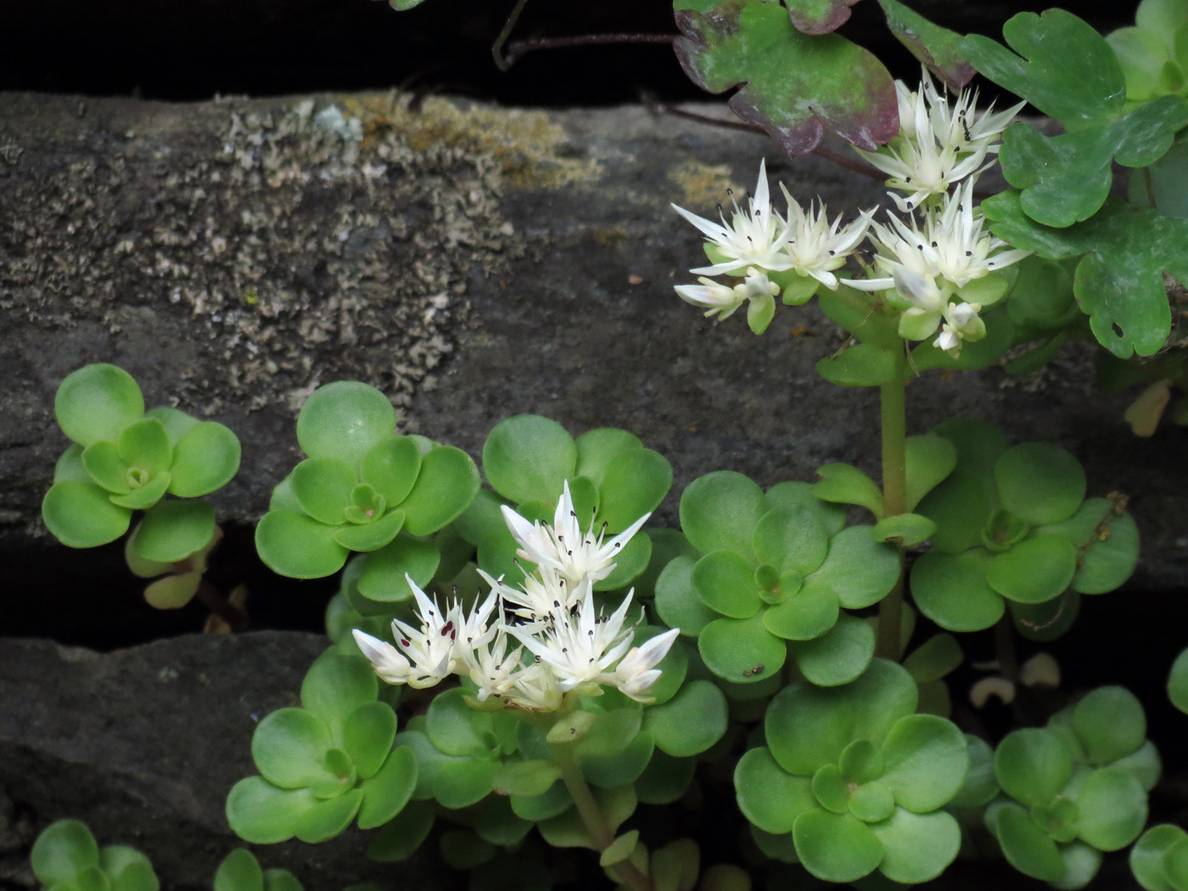
Mountain stonecrop is naturally found more north of here, but it’s habit of growing over rocks makes it seem like a nice option for this space. It would be nice if it spreads along and in the rock wall. It’s a spring bloomer.
